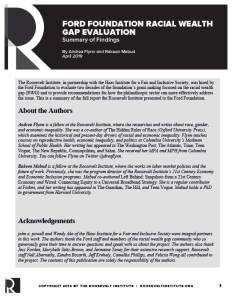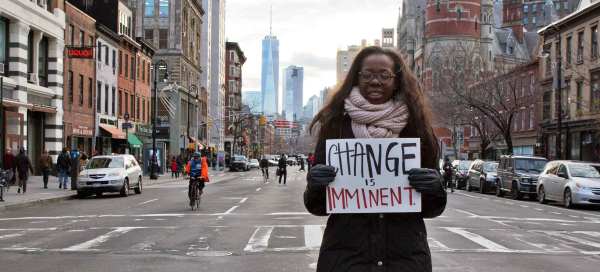The challenge
In the United States, there is a stark wealth gap between Black and white Americans. While racial wealth disparities are often considered in conversations about racial and economic inequality, approaches to addressing this gap tend to center on issues of wages and work—instead of the historical and structural factors driving this inequity. In the 1990s, rigorous scholarly research, such as Michael Sherraden’s Assets and the Poor (1991) and Melvin Oliver and Thomas Shapiro’s Black Wealth/White Wealth (1995), underscored the powerful consequences of lacking wealth, as opposed to merely lacking income.
Despite some progress in the late 90s and early 2000s, the 2008 financial crisis and its aftermath further deepened the racial wealth gap. By 2013, white households had a median net worth 13 times that of black households, according to Pew Research Center analysis.
What we did
From 1997-2015, Ford invested $662 million to support work on asset building and addressing the racial wealth gap. Ford’s work in this time centered on four main components:
- Programs that promote saving over a lifetime for asset accumulation and poverty reduction, such as child savings accounts (CSAs) and private retirement plans for American workers
- Research, innovative practice, and policy analysis focused on the underlying drivers of the racial wealth gap
- Public policies that facilitate asset building and debt reduction among low-income families, including preserving and strengthening Social Security
- Building a pipeline of scholars and practitioners representative of the communities most impacted by the problem.
In 2019, we hired the Roosevelt Institute, in partnership with the Haas Institute, to conduct an evaluation of Ford’s work on the racial wealth gap and develop recommendations for how the philanthropic sector can more effectively address the issue.
What we learned
- The philanthropic field needs to invest in a broad and comprehensive set of solutions that will address the structural barriers to wealth building in the short and long term. Although increasing wages and making work safer and more secure are critically important to improving economic security for all communities, especially for communities of color, Ford-funded research has demonstrated that doing so will not necessarily address the underlying factors driving racial inequity and will not substantially move the needle on the racial wealth gap.
- Any policies to build the assets of families of color must be bold, such as “baby bonds.” In addition, while an individual-based asset building approach remains dominant in the philanthropic sector, it is not enough to close the racial wealth gap on its own. In fact, a focus on individual asset building efforts can reinforce a problematic “bootstrap” narrative.
- Supporting scholars and practitioners of color has helped clarify the systemic problems driving the racial wealth gap and propelled the issue into mainstream conversations about economic and racial inequality. By engaging people closest to the problem in developing solutions, the foundation funded the creation of a network of experts of color focused on documenting, analyzing, and developing proposals for scalable solutions.
- There are great opportunities for the philanthropic sector to advance this work by investing in further research and advocacy. Funders should harness the recent political focus on racial and economic inequality to develop and advance a slate of solutions that are holistic in nature, integrate a gender analysis, and look to the long term.

